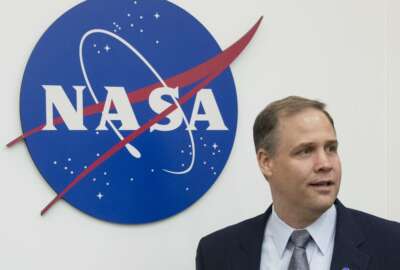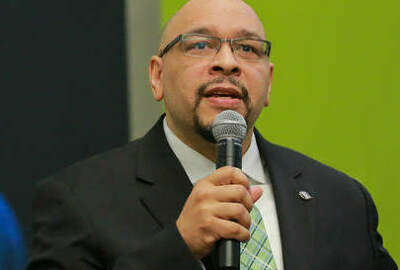
Forget spaceships: Experts say the most important thing NASA needs to get to Mars is consistency
None of the new technology NASA is working on to get it to Mars will matter if the agency doesn't have consistency in funding and vision over the next several...
NASA is working on a lot of new technologies to support its Artemis missions to return to the Moon and set the stage for Mars: the Orion spacecraft, the Lunar Gateway, next-gen spacesuits. But none of that will matter, according to A. Thomas Young, former director of NASA’s Goddard Space Flight Center, if NASA doesn’t get what it needs most upfront: consistency.
Young told the House Science, Space and Technology subcommittee on Space and Aeronautics that inconsistency in funding and priorities from changing administrations over the last 30 years has handicapped NASA’s ability to replicate the successful Apollo and Gemini missions of the 60s and 70s.
That’s a perspective that lawmakers seem to be coming around to as well.
“Achieving such an audacious endeavor requires ambitious yet realistic expectations, and the planning, leadership, workforce and resources to increase the probability of success,” subcommittee Chairwoman Kendra Horn (D-Okla.) said during the Nov. 13 hearing. “Anything else runs the risk of perpetuating a cycle of human exploration visions left unmet.”
And the Senate committee on Commerce, Science, and Transportation just passed the NASA Authorization Act of 2019 unanimously. If signed into law, it would be the first authorization bill for the agency since 2017, and only the second since 2010.
Provisions in the bill would dovetail nicely with what Young told lawmakers NASA needs to accomplish its current space exploration goals. One such parallel is their focus on the workforce.
“The challenges of the Moon-Mars program are such that the leadership capabilities of NASA must be augmented. Additional senior experienced leadership from other government organizations, industry and academia will be needed, as was the case for Apollo,” Young said. “Strengthening the NASA workforce will also be necessary. Half a century has passed since Apollo, making that experience less relevant. A workforce experienced in the development and execution of large complex space project will be required.”
Toward that end, the authorization bill would establish a pilot program allowing the NASA administrator to “appoint and manage” up to 5000 personnel and determine their pay, all without regard to title 5, except for the due process provisions.
It also authorizes voluntary separation incentive payments of up to $40,000 in order to “reduce the number of personnel employed or to restructure the workforce to meet mission objectives without reducing the overall number of personnel.”
Young also advocated for a closer relationship between NASA and the booming private spaceflight industry.
“The United States aerospace industry has implementation capabilities that are second to none. Utilizing the implementation capabilities of industry in partnership with the breadth of NASA experience will be critical to achieving the program’s success,” he said. “More specifically, the full capability of NASA and industry will be required. Management and contracting experiments must be excluded from the Mars-Moon program. Implementation will be at the limitation of our capability without the additional complications of management and contracting experiments.”
The NASA authorization bill would address this by taking a page out of DoD’s playbook and establishing consortia and university-affiliated research centers to facilitate access to new capabilities and technical analyses. Eligible organizations would include:
- Institutes of higher education
- Operators of federal funded research and development centers
- Non-profit research institutions
- Consortia that include any of the above along with private industry
This might seem like exactly the sort of management and acquisition experiment Young warned against, but he clarified his position, saying NASA should find the best way to make use of industry’s capabilities, while not ceding
“NASA has extraordinary capability that should be fully utilized and executed in the program. That’s kind of the number one premise. And industry has extraordinary capability in implementation, which should be utilized,” Young said. “So I’m not a fan of an acquisition process that basically is training industry to do the job that NASA has historically done. I’m in favor of an acquisition process that makes maximum use of both capabilities. As an example, a management experiment, in my view, would be to buy seats for crews to fly to the surface of the moon. I personally think that these should be government acquired assets under the leadership and direction of NASA, with industry having a full capability implementation. I think commercial cargo, if I went back to that, was an experiment that was worth doing and in my view, if it didn’t work out, it failed soft. Commercial crew in my example is not the kind of concept that I would propose or support that we implement for the lunar program.”
In addition to the workforce and industrial base provisions, the NASA authorization bill also extends funding for the International Space Station through 2030, continues development of the James Webb and Wide-Field Infrared Survey telescopes and funds NASA’s Office of STEM Engagement, which the President’s budget requests have twice proposed to defund.
Chairman of the Senate Committee on Commerce, Science, and Transportation Roger Wicker (R-Miss.) praised the bill during the Nov. 13 markup for providing the kind of consistency NASA needs.
“As America prepares to send the first woman to the moon and plans future missions to Mars, it is important to make sure NASA has the tools necessary to support these efforts,” he said. “This legislation would give the agency that clear direction needed to advance our nation’s space initiatives and affirm our global leadership in the final frontier.”
Copyright © 2025 Federal News Network. All rights reserved. This website is not intended for users located within the European Economic Area.
Daisy Thornton is Federal News Network’s digital managing editor. In addition to her editing responsibilities, she covers federal management, workforce and technology issues. She is also the commentary editor; email her your letters to the editor and pitches for contributed bylines.
Follow @dthorntonWFED
Related Stories

NASA wants to recruit more minority students for aerospace manufacturing jobs




